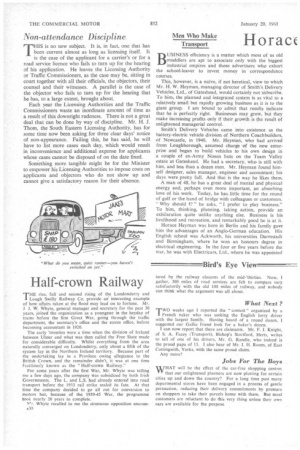Half-crown Railway
Page 32

If you've noticed an error in this article please click here to report it so we can fix it.
THE rise, fall and second rising of the Londonderry and Lough Swill)? Railway Co. provide all interesting example of how affairs taken at the flood may lead on to fortune. Mr. I J. W. Whyte, general manager and secretary for the past 30 years, joined the organization as a youngster in the heyday of trains before the first Great War, going through the traffic department, the secretary's office and the stores office, before becoming accountant in 1920.
The early 'twenties were a time when the division of Ireland between Ulster and what was then called the Free State made for considerable difficulty. Whilst everything from the area naturally converged on Londonderry, only about a fifth of the system lay in the Northern Ireland territory. Because part of the undertaking lay in a Province owing allegiance to the British Crown, and the remainder didn't, it was at one time facetiously known as the " Half-crown Railway."
For some years after the first War, Mr. Whyte was telling me a few days ago, the company Was subsidized by -both Irish Governments. The L. and L.S. had already entered into road transport before the 1933 rail strike sealed its fate. At that time the company decided to go all out for conversion to motors but, because of the 1939-45 War, the programme took nearly 20 years to complete.
Yr. Whyte recalled to me the strenuous opposition encounA30




















































































































